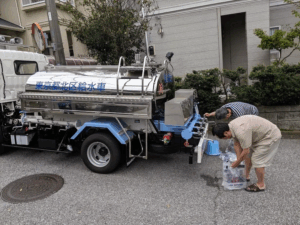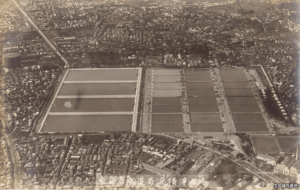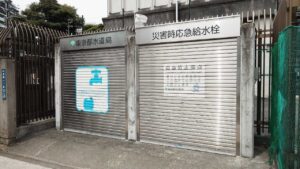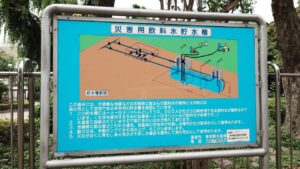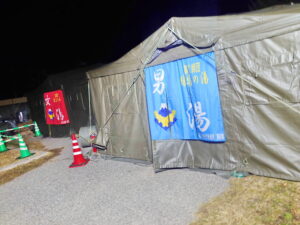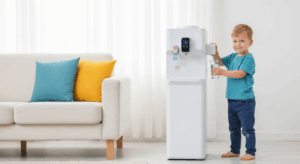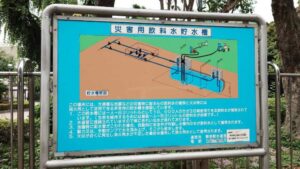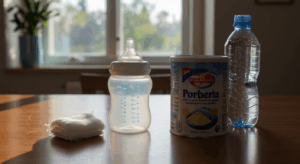When a water outage lasts longer than expected—
If water supply stations run dry or water trucks don’t arrive, even in such worst-case scenarios, there are still small amounts of usable water sources around you.
This article provides:
1. Six unexpected but accessible water sources around the home
2. A three-step method to purify water for daily use
presented in table format. We’ve summarized the necessary items, steps, and precautions so that you can act decisively when it matters most.

Three Basic Principles to Keep in Mind
- Collect the cleanest water possible.
The less contaminated the water, the easier and safer it is to treat. - Chlorine (household bleach) is essential—but do not overuse it.
Just 2 drops per 10–15 L bucket is sufficient. Excess chlorine causes strong odors and skin irritation. - Use primarily as daily-use water (bathing, laundry).
Secure drinking water from bottled or distributed sources whenever possible. Use treated water for drinking only as a last resort.
“Water Treatment Kit” to Keep at Home
| Category | Essential | Nice to Have |
|---|---|---|
| Chemicals | Chlorine bleach | PAC coagulant (for settling pond or river water) Only available in large quantities on Amazon. We’ll prepare smaller packages if there’s demand. |
| Water Containers | Buckets / 10L collapsible tanks | Funnels (100-yen shop ones are fine) Rain gutter diverters |
| Basic Filtration | Colander + towel/gauze/handkerchief | Brita-type water purifier |
| Premium Option | — | Portable membrane filters for disaster use |
When it comes to chlorine bleach, go with simple laundry-use types only!
Avoid “EX” or “Pro” types—they contain additives not suitable for disinfection.
If nothing else is available, kitchen bleach (e.g., Kitchen Haiter) is acceptable.
Simple Water Treatment Methods
These are basic water treatment methods. Combine them as needed based on the water source.
| Step | Purpose | Procedure |
|---|---|---|
| ① Chlorination | Disinfection Iron precipitation | Add 2 drops of bleach to 10–15 L of water (Less than 1/5 tsp) |
| ② Boil for 3 minutes | Disinfection Chlorine removal | Boil water for 3 minutes on a stove |
| ③ Settling | Separation of cloudy particles by sedimentation | Transfer collected water to a bucket and leave it still for several hours. Use the clearer water on top. |
| ④ Towel/Handkerchief Filtration | Separation of cloudy particles by filtration | Strain water using a colander and towel |
Six Nearby Water Sources and How to Treat Them
Legend: ★★★ = Drinkable with disinfection, ★★☆ = Suitable for bathing, ★☆☆ = Suitable for laundry
| No. | Source | Collection Tips | Safety | Water Quality & Notes | Treatment Method | Usage |
|---|---|---|---|---|---|---|
| ① | Rainwater | Discard first 5 minutes of rainfall before collection | ★★★ | Drinkable with chlorine disinfection after discarding initial rain | Chlorination | Drinking, cooking, washing hands, bathing, laundry |
| ② | AC Condensate / Dehumidifier Water | Place a bucket at the end of the drain hose | ★★★ | Keep hose/tank clean | Chlorination | Drinking, cooking, washing hands, bathing, laundry |
| ③ | Well Water | Use hand pump | ★★☆ | Quality varies by surface seepage | Chlorination If cloudy: settling or towel filtration | Washing hands, bathing, laundry |
| ④ | Firefighting Water Tanks | Follow administrator instructions | ★★☆ | Quality depends on tank condition | Chlorination If cloudy: settling or towel filtration | Washing hands, bathing, laundry |
| ⑤ | Rivers / Ponds | Collect only clear water | ★☆☆ | Quality varies by location | Clear water: chlorination or boiling Cloudy water: settling → towel filtration → chlorination | Washing hands, bathing, laundry |
| ⑥ | Pools | Good in summer Low priority in cold seasons | ★☆☆ | Quality changes by season | Clear water: chlorination or boiling Cloudy water: settling → towel filtration → chlorination | Washing hands, bathing, laundry |
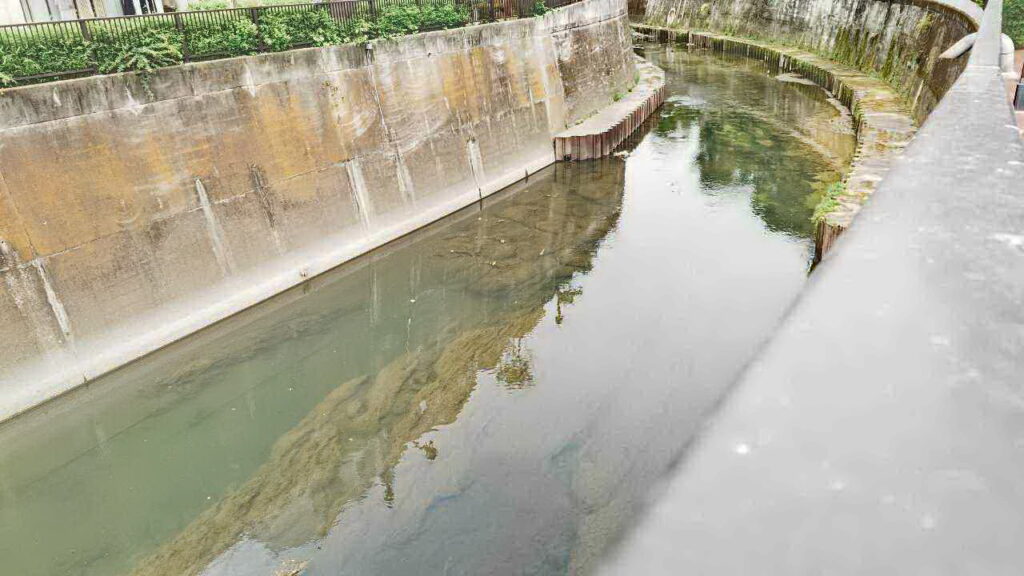
Understanding Water Treatment
| No. | Substance | Potential Sources | Risk Level | Treatment Method |
|---|---|---|---|---|
| ① | E. coli and other bacteria | All sources | ★★★ | Chlorination, boiling |
| ② | Cloudy particles | Rivers, ponds | ★☆☆ | Settling → collect clear water Colander + towel Portable filter |
| ③ | Iron | Groundwater, fire tanks | ★☆☆ | Oxidize with chlorine → filter |
| ④ | Chemicals | Urban rivers | ★★★ | Use water purifiers |
| ⑤ | Organic matter | Rivers, ponds, shallow wells | ★★☆ | Cannot be treated at home OK for laundry use |
| ⑥ | Nitrogen & nitrogen oxides | Rivers, ponds, shallow wells | ★★☆ | Cannot be treated at home OK for laundry use |
Water Treatment Q&A
Conclusion
This article explained how to treat water using household items to make it suitable for daily non-drinking use. There are a few essential materials and tools, so it is advisable to prepare them in advance before a disaster strikes.
We hope this article proves useful in times when water access becomes critically limited.
